The Amber Fort is a grand UNESCO heritage fortress situated in Amer, just 11 km away from Jaipur. It is built on a hill and is made of red sandstone and marble, giving it a majestic look. Through its four courtyards, the fort narrates the story of the Meena group and Raja Man Singh I.
Table of Contents
Jaipur’s Amber Fort: a Rajasthan Fortress UNESCO World Heritage Site
The Amber Fort, a majestic structure located on a hilly promontory near Jaipur, is a popular tourist destination in Rajasthan, India. Initially constructed as the residence of the Rajput maharajas and their families, it became a UNESCO World Heritage Site in 2013, along with five other Rajput forts in Rajasthan.
PLAN YOUR TRIP TO INDIA
When in India, stay connected at the best rates by purchasing an Airalo eSIM online before your trip. This eliminates the hassle of purchasing a physical SIM at the airport.
About travel insurance, Heymondo is the way to go. They offer comprehensive coverage against unexpected events like medical emergencies, trip cancellations, lost luggage, and more. Heymondo provides excellent value for money and will give you peace of mind on your travels!
The construction of Amber Fort started in 967 when Raja Man Singh was ruling. However, the structure underwent many modifications and additions over the centuries. Its current form was achieved in the late 16th century under the reign of Raja Man Singh I.
The fort, made of red sandstone and marble, is parted into four main courtyards, each with its own grand entrance. In addition, there is an underground passage that connects Amber Fort to the nearby Jaigarh Fort. During times of war, the royal family and other inhabitants of the fort would use this passage to travel to the safer Jaigarth Fort.
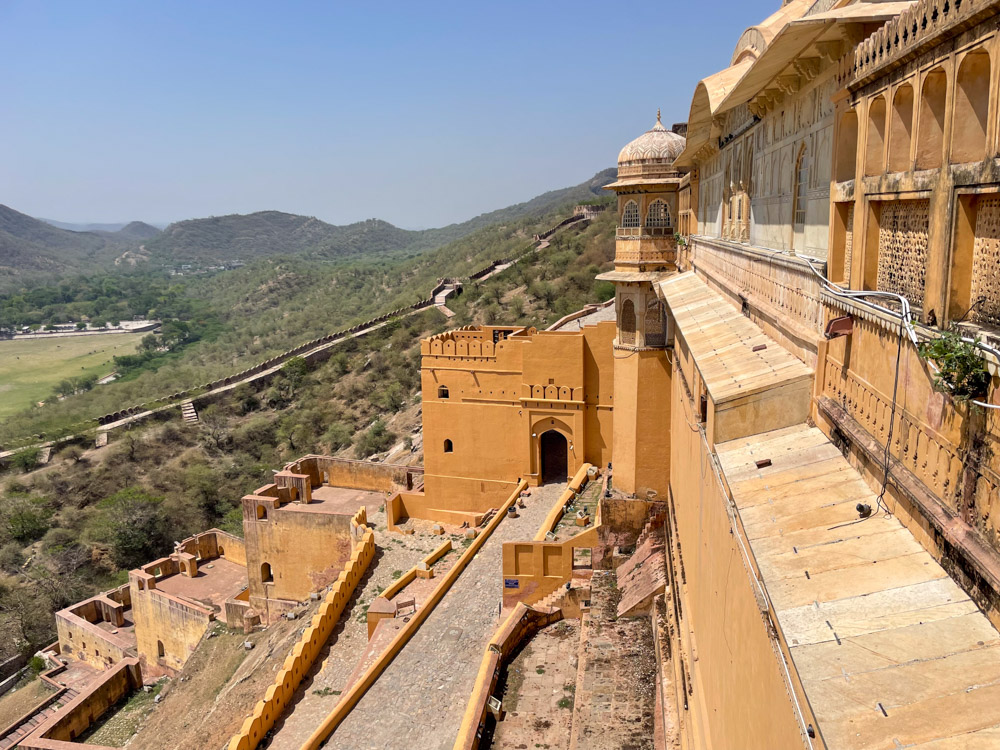
The majestic architecture of Amber Fort
Situated on top of Eagle Mountain, Fort Amber offers an extraordinary panoramic view. The imposing defensive walls are interspersed with watchtowers. The defensive walls reach the edge of a lake, the only source of water in the region and an essential part of the fort’s water system.
The lake in fact supplied water both to the gardens and to the hammam located inside the palace. The gardens of Fort Amber aren’t just decorative. Together with the windows, they were part of an incredible natural air conditioning system.
Each section of the palace reveals architectural surprises, from mirrors in the rooms to create candlelight effects to secret corridors to move discreetly between rooms. The entire structure alternates between public and private rooms of the royal residence, such as a palace for the maharaja’s wives and an imposing parade ground for military gatherings.
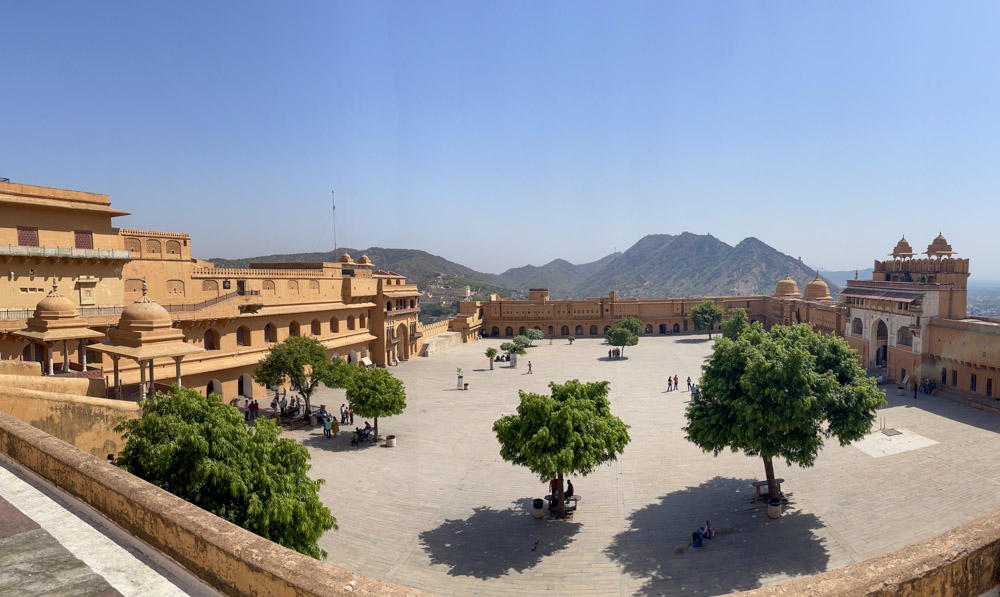
First courtyard
The first courtyard of the Amber Fort, used as a parade ground, greets visitors with majesty. The entrance to the main palace is via a majestic staircase at the side of the Sila Devi Temple. Devi is an incarnation of the goddess Kahli who protects against negativity. Here the maharajas prayed and offered buffaloes or goats as sacrifices. The interior of the temple is in white marble completely inlaid, but it is not possible to take photos.
Second courtyard
In the second courtyard of the Amber Fort, characterised by a double row of columns, public audiences were held. Entrance is through the Lion Gate, through which royals once passed as a symbol of power. The centre of the courtyard hosts the audience hall, called Diwan-i-Aam, a raised platform with 27 columns, each decorated with an elephant head.
Third courtyard
The private residences of the Maharajas are in the third courtyard of the Amber Fort, accessible through the famous Ganesh Gate, renowned for its splendid decoration. This space houses two buildings on opposite sides, separated by what was once a lush garden.
The Jai Mandir, also known as the Sheesh Mahal or Palace of Mirrors, is to the left of the entrance. Inside, convex mirrors created a striking play of light when lit by candles. Opposite the Jai Mandir stands the Sukh Niwas, or Pleasure Hall, accessed through an imposing sandalwood door. Crossed by an open channel, the building maintains a cool temperature thanks to the water flowing down to the gardens.
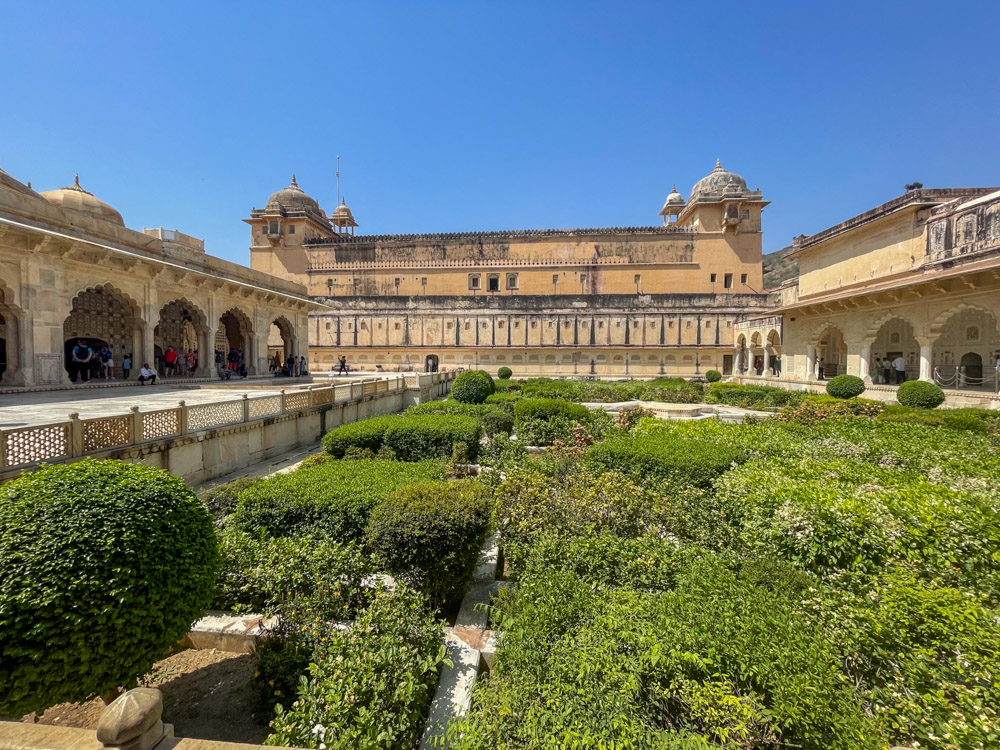
Fourth courtyard
The fourth courtyard of Amber Fort was reserved for the women of the royal family, including concubines and mistresses. The maharaja’s wives lived separately in identical palaces, meeting monthly to settle disagreements. The rooms used for pleasure meetings were frescoed with paintings depicting scenes from the Kamasutra. The southern part of the courtyard houses the Palace of Man Singh I, the oldest part of the fortress, completed in 1599.
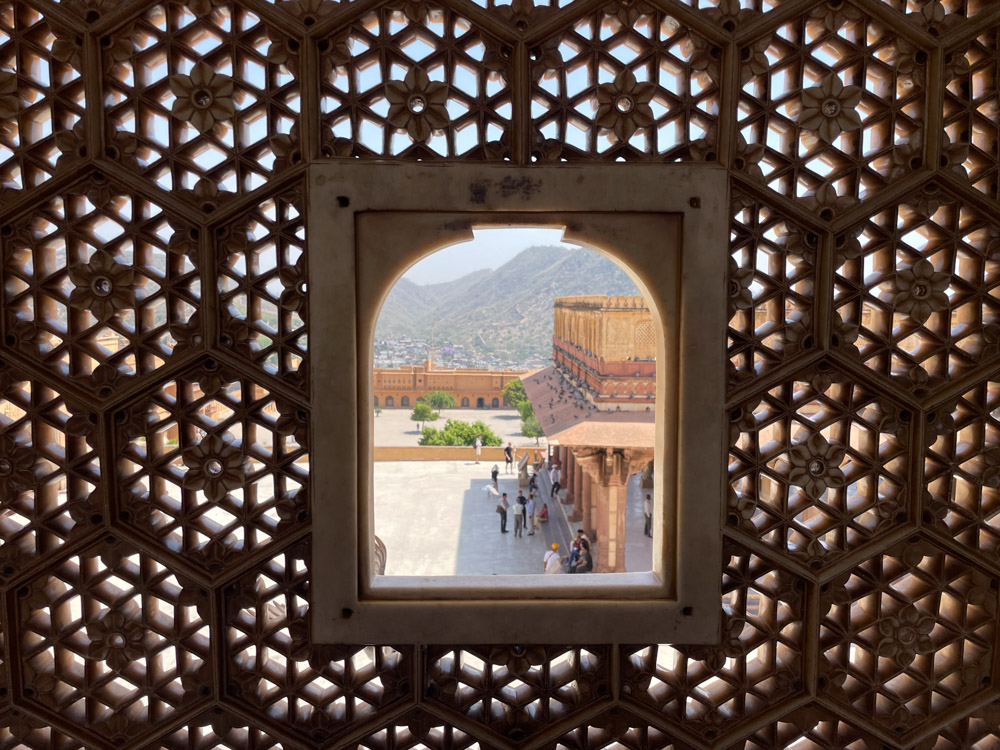
Essential tips for your visit to Amber Fort near Jaipur
The whole Amber Fort is really big and requires several hours to be seen in its entirety. Precisely for this reason, I recommend arriving early in the morning to avoid the crowds and intense Rajasthan heat. The fort is open all year round, but I recommend to avoid the hottest months, from April to June.
Admission costs the equivalent of about €10/£9 at the time of writing and, theoretically, you can pay by credit card. However, in my experience, it’s better to pay in cash at the ticket counter, as credit cards couldn’t be accepted.
To fully appreciate the history and architecture of Amber Fort, you must visit the complex with a guide. If you go on your own, you can hire an official guide at the ticket office. The price is almost the same than the entrance ticket. Alternatively, you can discover the Amber Fort with a guided tour from Jaipur. This kind of tour usually includes other attractions such as the Jal Mahal Water Palace, the Hawa Mahal Palace of the Winds, the City Palace and the Jantar Mantar observatory.
Beware of tourist traps
Jaipur’s Amber Fort is definitely a must-see attraction in Jaipur, but, it can also prove to be a tourist trap. The area is intensely touristy, with vendors and street performers trying to attract attention. First, the snake charmers and many characters dressed in traditional clothes inside the Amber Fort may approach you in a friendly manner and then ask you for money to take photographs or for their performances. If this is the case, be aware of the possible scam and enjoy your destination while paying attention to situations that may involve unforeseen additional costs.
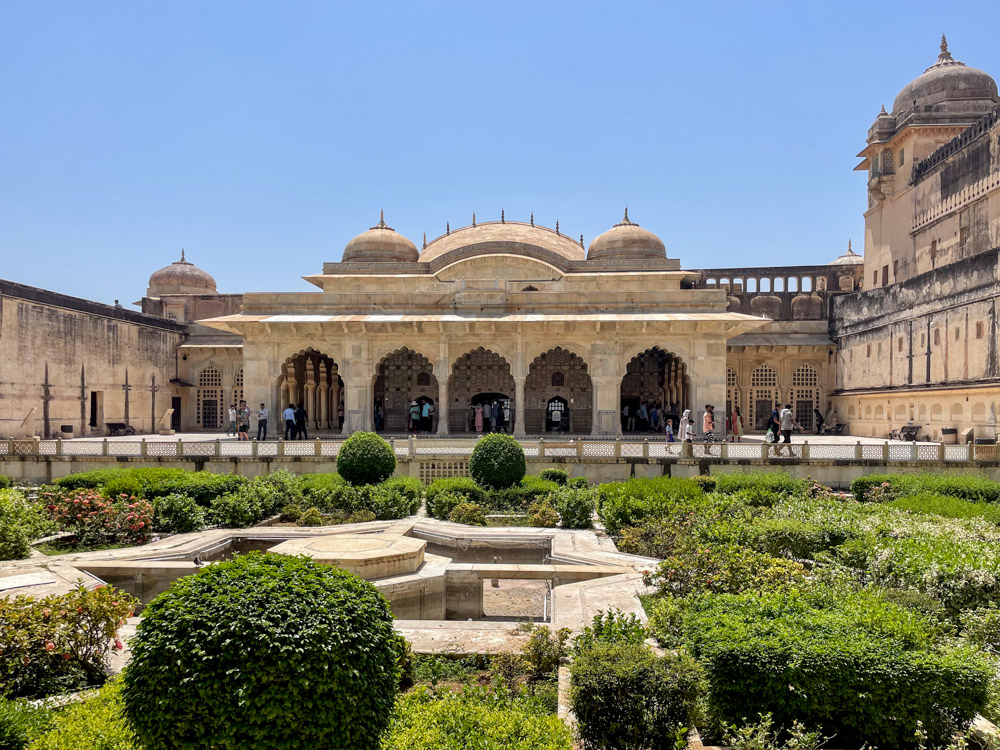
How to reach Amber Fort
Amber Fort can be reached from Jaipur by bus or taxi. Once parked in the designated area, you can only get to the entrance by foot, jeep or elephant. Elephants are an attraction for many tourists, however, nowadays they are no longer a traditional way of travelling in India, but merely an attraction for the benefit of visitors. For this reason, I recommend you choose the jeep instead of the elephants.
Fort Amber
Devisinghpura, Amer
Jaipur, Rajasthan 302001, India
Visiting the Amber Fort in Jaipur is a journey through the history and architecture of Rajasthan. From the sumptuous palaces to the breathtaking views, every detail tells a fascinating chapter. Write in the comments if you have already visited this magnificent Indian fortress or if you were intrigued about it, after reading this article.
